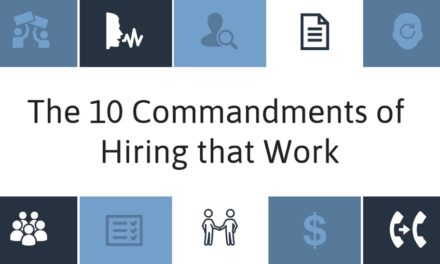On December 31, 2016, New York raised its hourly minimum wage to $9.70 for Greater New York, $10.00 for Nassau, Suffolk, and Westchester counties, $10.50 for New York City employers with 10 or fewer employees, and $11.00 for New York City employers with 11 or more employees. As I mention on WageAdvocates.com these increases are meant to move forward towards the "Fight for 15" goal, which is a national movement for higher wages.
State-By-State Patchwork
Minimum wage rates are a combination of federal, state, and local laws. The current federal minimum wage as set by the Fair Labor Standards Act (FLSA) is $7.25 per hour and has not increased since July of 2009. This federal rate applies in seven states: GA and WY where minimum wage rates are lower than the federal rate, plus the five states - AL, LA, MS, SC, TN - that have no minimum wage laws. The 2017 changes already in place in the remaining 43 states where minimum wage rates exceed the federal rate represent wage hikes from 0.6% in Ohio to a whopping 24.2% in Arizona.
On January 1, 2017, 18 additional states raised their respective hourly minimum wage rates as follows:
- Alaska: $9.80
- Arizona: $10.00
- Arkansas: $8.50
- California: $10.00 (employers with 25 or fewer employees); $10.50 (employers with 26 or more employees)
- Colorado: $9.30
- Connecticut: $10.10
- Florida: $8.10
- Hawaii: $9.25
- Maine: $9.00
- Massachusetts: $11.00
- Michigan: $8.90
- Missouri: $7.70
- Montana: $8.15
- New Jersey: $8.44
- Ohio: $8.15 (employers with gross receipts of $297,000 or more); $7.25 (employers with gross receipts of less than $297,000)
- South Dakota: $8.65
- Vermont: $10.00
- Washington: $11.00
Impact On Human Resources Departments
Most states are attempting to move toward a $15.00 per hour minimum wage. While achieving this by means of incremental increases over a period of years, each stage nevertheless has an enormous impact on the affected employers.
For Human Resources directors tasked with long-range planning and budgeting, understanding and complying with the myriad of applicable laws can be daunting. This is especially true for those working in the healthcare sector that employs large numbers of low-wage workers.
Healthcare Statistics
According to the Bureau of Labor Statistics, orderlies, nurses' assistants, home health care aides, and other low-paid workers account for 2.4 million of the nation's 14.6 million healthcare jobs. These jobs are also the fastest-growing healthcare employment segment. The BLS estimates that today's nearly 1.5 million home health and hospice workers will grow by 48% over the next decade, while the number of nursing assistants and orderlies will grow by 21%.
California's 440,000 healthcare workers represent 8% of the state's 5.6 million workers. However, when California Governor Jerry Brown signed legislation in March 2016 that will raise the state's minimum wage to $15.00 an hour by 2022, none of the state's "big three" healthcare associations (California Hospital Association, California Association of Health Facilities, and California Association for Health Services at Home) came out against it.
On the other hand, New York Governor Andrew Cuomo's April 2016 legislation that will raise that state's minimum wage to $15.00 an hour by 2021 met with considerable, albeit unsuccessful, opposition. The Healthcare Association of New York State estimated that, if implemented, the salary increase could cost hospitals, nursing homes, and home care providers $2.9 billion.
FSLA Exclusions And Exemptions
Not all jobs are subject to FLSA rules and regulations. The statute itself excludes some jobs, such as movie theater employees and most agricultural workers. Other jobs are excluded because they are governed by a different federal labor law. For example, railroad workers are governed by the Railway Labor Act and most truck drivers are governed by the Motor Carriers Act.
Some FSLA jobs are exempt for purposes of the minimum wage, overtime pay, or both. Employers claiming an exemption carry the burden of proof and such claims are narrowly construed against them. Consequently, determining which employees are exempt can be a complicated and time-consuming process for HR professionals.
The three main criteria for exempt employees is that they must:
- be paid a minimum of $23,600 per year ($455 per week);
- be paid on a salary basis as determined by the salary basis test; and
- perform exempt job duties as determined by the duties test, which itself has three subcategories: executive job duties, professional job duties, and administrative job duties.
The Society for Human Resource Management (SHRM) provides a very detailed Exemption Questionnaire to aid HR professionals in determining which employees are exempt and which are not
Latest posts by Tim Becker (see all)
- Update On The New Minimum Wage Changes - March 19, 2017
- Which Employees Are Exempt from Overtime Pay? - November 1, 2016
- New Overtime Rules Warrant A Close Look At Payroll Practices - June 26, 2016













